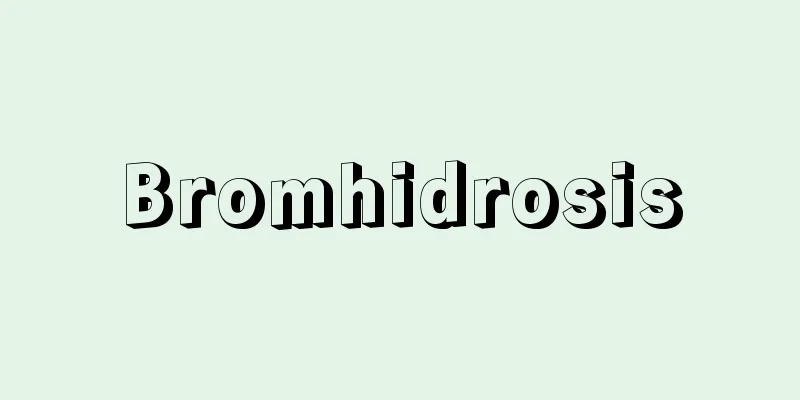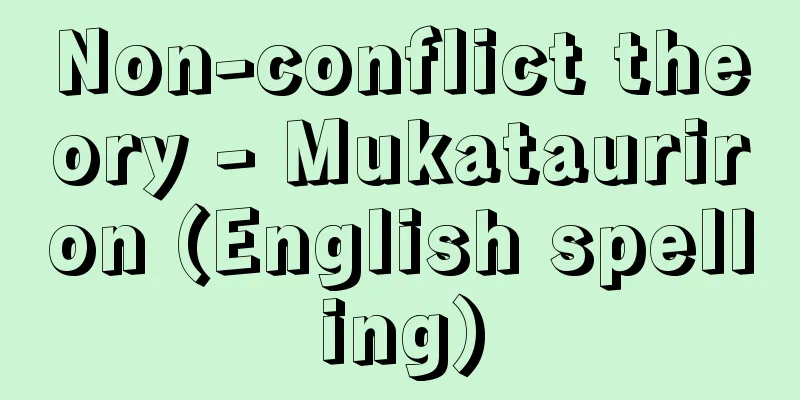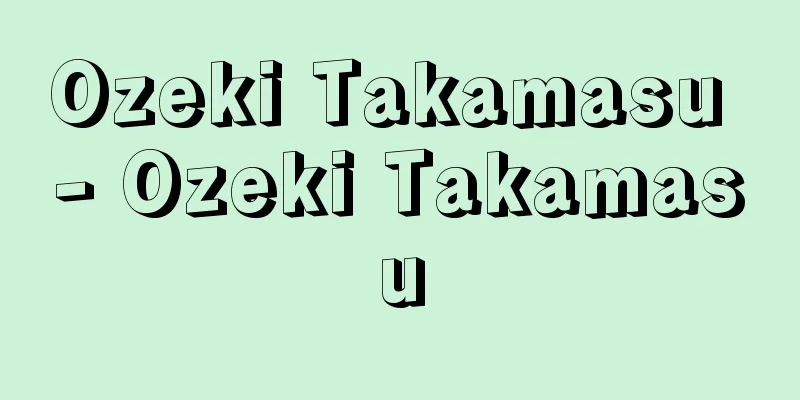Okamaibasho - Okamaibasho

|
...There were cases of exclusion from a specific area and cases of exclusion from specific groups and social relations. The former example is the use of the term Nihon kokukō (Japanese national structure) to refer to expulsion from Japan, but in later Shogunate law, the terms o-banishment and harai (expulsion) were mainly used to name punishments, and areas with restrictions on entry and residence were specifically called okamaibashiyo (places of residence). On the other hand, the Kojikata Osadamegaki lists the names of punishments for exclusion from groups and social relations for monks and nuns, including isshukō (expulsion from one's sect) and ishakō (expulsion from one's sect within one's sect), which are heavier than the leap punishments of tsuin and kain.... From [Expulsion]...The banishment punishment was widely used during the Sengoku period, and was inherited in the Edo period and established as a system in the Shogunate Law, Domain Law, and other feudal lord laws such as the Hatamoto. The Edo Shogunate's "Kujikata Osada Megaki" listed six levels of banishment punishment, namely, severe banishment, medium banishment, light banishment, banishment within ten ri of Edo, Edo barai, and tokoro barai, and specified the Okamaibashiyo (area of no entry) for each punishment. For severe banishment, the areas to be exiled are Musashi, Sagami, Kozuke, Shimotsuke, Awa, Kazusa, Shimousa, Hitachi, Yamashiro, Settsu, Izumi, Yamato, Hizen, Tokaido-suji, Kisoji-suji, Kai, and Suruga. For moderate banishment, the areas to be exiled are Musashi, Yamashiro, Settsu, Izumi, Yamato, Hizen, Tokaido-suji, Kisoji-suji, Shimotsuke, Nikko-dochu, Kai, and Suruga. For light banishment, the areas to be exiled are within 10 ri of Edo, Kyoto, Osaka, Tokaido-suji, Nikko, and Nikko-dochu, and the areas to be exiled are the areas to be exiled, along with the province of residence and the province of the crime. *Some of the terminology used in reference to the "Gokōbasho" are listed below. Source | Heibonsha World Encyclopedia 2nd Edition | Information |
|
…特定地域から排除する場合と,特定団体・社会関係から排除する場合とがあった。日本国外追放を日本国構と称したことなどは前者の例であるが,後期幕府法においては,刑名はおもに追放,払(はらい)の語を用い,立入り,居住制限区域をとくに御構場所(おかまいばしよ)と呼んでいた。一方団体・社会関係からの排除として《公事方御定書》には,僧尼の閏刑で追院,退院より重い一宗構(所属宗旨からの追放),および一派構(宗旨中の所属宗派からの追放)の刑名がある。… 【追放】より…戦国期にも追放刑が多用され,江戸時代に受け継がれて幕府法,藩法,その他旗本など領主法上の制度として定着した。 江戸幕府の《公事方御定書(くじかたおさだめがき)》は6段階の追放刑,すなわち重追放(おもきついほう),中(なかの)追放,軽(かるき)追放,江戸十里四方追放,江戸払(えどばらい),所払(ところばらい)を掲げ,各刑について御構場所(おかまいばしよ)(立入禁止の地域)を定めている。重追放は武蔵,相模,上野,下野,安房,上総,下総,常陸,山城,摂津,和泉,大和,肥前,東海道筋,木曾路筋,甲斐,駿河を,中追放は武蔵,山城,摂津,和泉,大和,肥前,東海道筋,木曾路筋,下野,日光道中,甲斐,駿河を,軽追放は江戸10里四方,京,大坂,東海道筋,日光,日光道中を,それぞれ住居の国および犯行の国とあわせ御構場所とする。… ※「御構場所」について言及している用語解説の一部を掲載しています。 出典|株式会社平凡社世界大百科事典 第2版について | 情報 |
Recommend
Klaipeda - Klaipeda (English spelling)
A commercial and industrial city in the Republic ...
Sawagurumi - Sawagurumi
A deciduous tree of the Juglandaceae (APG classif...
Aurora X-Ray
...In addition to the blinking of patch-type auro...
Urinary Stones
What are urinary stones? Tests to detect urinary s...
Henry [III] - Henry
German King of the Salier Dynasty (reigned 1028-10...
Myocardial infarction
Myocardial infarction is a disease that causes myo...
Okugun
The entry for December 776 in the Shoku Nihongi (C...
spiny dogfish
...In Kyushu, it is called Kennooso or Kenbuka. I...
Cascade Impactor
...An instrument that measures the amount of fine...
Kimuro Uun
Year of death: June 28, 1783 (July 27, 1783) Year ...
Hermit - Inja
Japan A person who leaves the secular world in or...
Oriku
〘Noun〙① A type of technique in waka poetry. A five...
Coastal cool desert
...Arid regions can also be found in high latitud...
Plasma derivative
…Whole blood collected using an anticoagulant can...
verruca vulgaris (English spelling) verruca vulgaris
… [Viral warts] Warts caused by viruses are cause...









